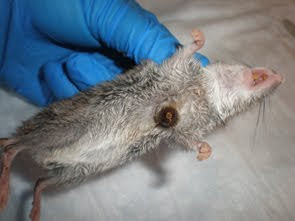Answer:
Entamoeba histolytica/disparCongratulations to all of the viewers who wrote in with the answer - you recognized that the morphologic features and size were consistent with these two closely related protozoa.
E. histolytica is a recognized pathogen, although it only causes disease in approximately 10% of the people it infects.
E. dispar, on the other hand, is generally considered a non-pathogen. Unfortunately, the two are morphologically indistinguishable, and require isoenzyme, antigen, or molecular methods to distinguish them. The only exception to this is when
E. histolytica trophozoites are seen invading the bowel wall on histologic section, or contain ingested RBCs on ova and parasite exam. No ingested RBCs are seen in this case, so it is not possible to differentiate between the two organisms.
The answer to the second part of the question is that an asymptomatic host could still be infected with either
E. histolyticaor
E. dispar (remember that most
E. histolytica infections are asymptomatic).
Finally, just to make life difficult for clinical parasitologists, there is now a THIRD species of
Entamoeba which is morphologically indistinguishable from
E. histolytica and
E. dispar.
Entamoeba moshkovskii is now recognized to be a wide spread environmental organism and occasional human parasite. Therefore, I suppose that the most correct answer to this case is "
Entamoeba histolytica/dispar/moshkovskii!!











